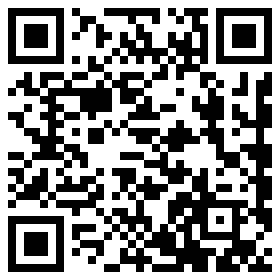A centralized exchange lets you use an account with the premise that, unlike the bank, they will not lend or use customer assets. However, it’s not that simple. Users of centralized exchanges do not own their own private keys at all and have little idea of whether an exchange can cover withdrawals from one moment to the next. Instead, the exchange has ownership of those private keys, and therefore any crypto at any address on its platform.
While that may not seem immediately concerning, it means if the exchange fails, you lose your funds. You may think that sounds like a worst-case scenario, but unfortunately, it’s more frequent than you might think. As a result, customers are demanding centralized exchanges go through the appropriate methods of auditing.
Enter: The Proof Of Reserves audit. This crypto audit allows centralized institutions — like many crypto exchanges — to prove their trustworthiness to their customers. With crypto proof of reserves audits, unmanaged protocol risks and ecosystem dependencies are out in the open.
But what exactly is a proof of reserves audit and how does it work?
Defining Proof of Reserves
‘Proof of Reserves’ is a specific audit for crypto institutions wherein a third party assesses the assets they own against their debt, also known as “liabilities”. The third party will count up every asset an institution can prove they own. These types of assets may include fiat assets, such as dollars or euros, or crypto assets, such as bitcoin and ETH. Following that, the auditor will collect the data on the same institution’s debt and tally up the total.
To verify individual account balances without the danger of exposing personal or sensitive information, a proof of reserves audit uses a data structure called a Merkle tree. Without getting too technical, this data structure is a way of validating information, whilst obscuring its sensitive contents. The main idea of the audit is to verify that platforms actually have the funds they claim to have, therefore reassuring users that their funds are in safe hands.
Proof of Reserve in Traditional Finance
The idea behind a proof of reserves audit is not new. Audits of this nature were popular long before crypto’s inception. The objective of any audit is to provide an impartial assessment of an institution’s financial health. Thus, registered financial organizations are legally bound to conduct audits regularly.
Much like their crypto counterparts, financial institutions use a third-party auditor to verify their reserves.
However, the results are slightly different. While the whole aim is to become more transparent, tradFi institutions will only share this important information with stakeholders and board members. While customers may have access to some information about an institution’s financial health — such as its general performance — the majority of tradFi audit reports remain completely confidential and unavailable to the general public.
Unfortunately, this poses a problem: trusting the third-party auditor. Even if an institution releases a public report, these reports only provide summary-level information, leaving the user with little idea of how their funds are being kept.
Of course, it’s no surprise that customers appreciate transparency, especially on developing platforms and in nascent industries. How else is an everyday user meant to get an idea of a firm’s investment strategies and risk appetite?
With this in mind, crypto audits — such as Proof of Reserves — are conducted with increased transparency.
So let’s see how crypto proof of reserves really works:
Proof of Reserves in Crypto
Crypto proof of reserves audits also use a third party. However, the blockchain allows for more transparency in the process. A crypto auditing company tallies the on-chain holdings of the company with the client assets on its balance sheet.
Since wallet holdings on the blockchain are public, users can easily verify the audit report via blockchain explorers.
Furthermore, the blockchain allows anyone to track the exchange’s wallet transactions — flagging any suspicious activity, such as transfers of large volumes of data, without waiting for another audit. Some exchanges also offer “self-assessment” audits within their platform, instead of using block explorers. Through these self-assessment audits, users can validate if the exchange still holds their funds at any given time.
Proof of Reserves: Increasing Transparency for Centralized Platforms
Proof of Reserves audits give crypto exchanges the chance to be more transparent. And many centralized exchanges welcome the opportunity to clarify their financial situation to their customers. However historically, not all exchanges have been so open.
Since all centralized exchanges can keep their financial sheets private, the customer has no idea what’s happening to their funds. While many exchanges are champions of transparency, others have ended up down a darker path of using customer funds and not having the assets to cover them.
So, how does a proof of reserves audit help you to know if an exchange might stand the test of time?
Self Custody: No Need for Proof of Reserves
The safest way to store your crypto is and will always be self-custody — where you can take control of your funds. With self-custody, you don’t need to trust anyone, accessing the entire decentralized crypto ecosystem directly.
Besides that, self-custody allows you the freedom to be your own bank. With you at the helm, your private keys, and therefore your assets, are on course for smooth sailing.



All Comments